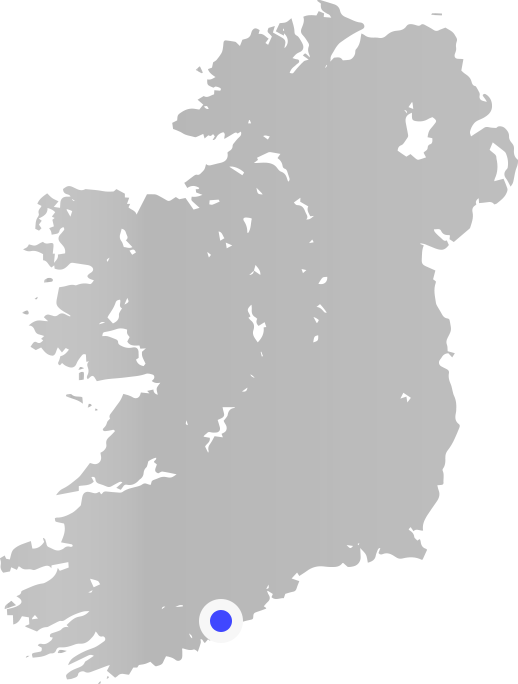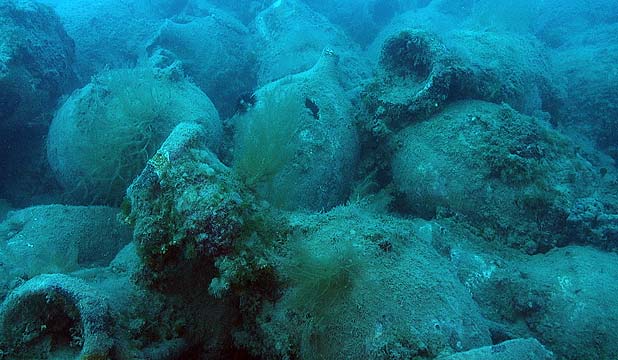TWO SHIPWRECKS discovered off the Donegal coastline may be linked to the late 16th-century Spanish Armada and a separate late 18th-century French armada, despatched to assist Irish rebellion efforts.
However, identification of the two wrecks outside Burtonport harbour may take some time, Connie Kelleher of the Department of Arts, Heritage and the Gaeltacht’s underwater archaeology unit, said yesterday.
The two shipwrecks, one of which is definitely a warship, are lying 200m apart in just four metres of water off Rutland Island close to Burtonport.
Lead shot balls were retrieved during dives in which Ms Kelleher participated yesterday morning. Pottery has also been recovered from within the hull of the possible Spanish Armada ship, which is filled with sediment.
A full excavation of material is under way, as part of a long-term management plan for the location.
Minister for Arts, Heritage and the Gaeltacht Jimmy Deenihan has awarded €50,000 for the work, and the Geological Survey of Ireland’s vessel Keary, named after late geologist Raymond Keary, is providing a support platform for the dive team.
Many of the wrecks already located lie off the north and west coasts, off Inishowen in Co Donegal; Co Sligo; Clare Island, Co Mayo; Co Galway; and Co Clare; and the Blasket Sound in Kerry.
Five of the hulls, or remains of same, have been located off Donegal, and the three wrecks off Streedagh strand in Sligo were the subject of a protracted court action.
The two wrecks now under investigation were originally pinpointed by Donegal divers, including Liam Miller, Oscar Duffy and Michael Early in 2008-2009. At this stage, identification is uncertain, but Ms Kelleher believes they may be “enormously significant”.
The later wreck, possibly French, could be linked to Napper Tandy’s revolutionary efforts. Tandy (1740-1803), who worked with Wolfe Tone in founding the United Irishmen, accepted a French government offer of a corvette, the Anacreon, and sailed from Dunkirk with United Irishmen and arms, arriving on Arranmore island, close to Burtonport, in September 1798.
However, locals were said to be less than supportive of his aims.
Tandy also learned that Gen Humbert’s expedition had been defeated in Mayo. Nevertheless, he took possession of Rutland, hoisted an Irish flag, and issued a proclamation before leaving and sailing north.
The Geological Survey of Ireland, which is mapping Irish inshore areas as part of the national seabed survey Infomar, will use sidescan sonar and magnetometer equipment in the area to check if there are any other ships.
Mr Deenihan said yesterday that he was “delighted” to be able to support investigations into “a major find of significance not only to Ireland, but also to the international archaeological, historical and maritime communities”.
Mr Deenihan said that if one of the wrecks proves to be from the Spanish Armada, it could constitute one of the most intact on this coast to date and could provide “huge insight into life on board and the reality of the military and naval resources available to the armada campaign”.
He paid tribute to the co-operation of the National Monuments Service and the National Museum of Ireland, which will take responsibility for any artefacts recovered.
SPANISH ARMADA
SOME 24 to 26 Spanish Armada ships are believed to have foundered off the Irish coast in 1588 while en route to invade England under the command of King Philip II.
At least 14 of the sunken ships have been extensively mapped to date.
The total armada fleet of 130 ships, with 29,453 sailors and soldiers on board, comprised 65 warships, 25 transport vessels, four galleys and a number of smaller vessels.
When the fleet was defeated in the English Channel, a scattered fleet opted for the Scottish and Irish west coast route home, but ran into storms. “God breathed and England was saved” was Sir Francis Drake’s later remark about the maritime disaster, which resulted in less than 75 per cent of the fleet making it home.
Source: www.irishtimes.com













